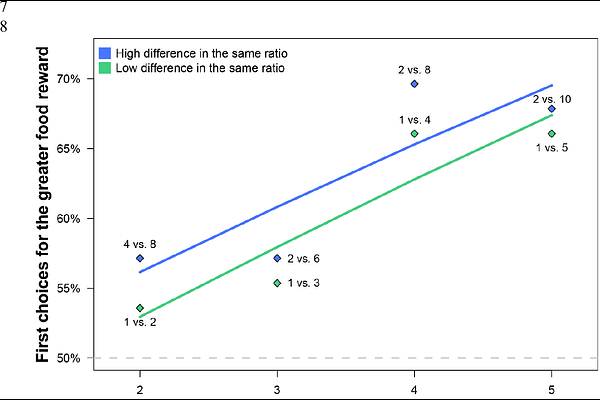Food for thought: Rosy-faced lovebirds (Agapornis roseicollis) are capable of associative symbol learning and inference-based quantity discrimination

Food for thought: Rosy-faced lovebirds (Agapornis roseicollis) are capable of associative symbol learning and inference-based quantity discrimination
Wang, S.; Lo, K. C. H.; Shiu, V. W. T.; Hung, C. Y. C.; Poon, E. S. K.; Newman, C.; Buesching, C. D.; Sin, S. Y. W.
AbstractCognitive capacity for quantity discrimination is highly adaptive in various ecological contexts and subject to convergent evolution across diverse animal species, yet the underlying mechanism involved is not fully understood. Discrimination accuracy generally increases with the ratio between two quantities; however, this ability is expected to differ across ratio ranges. To test this we presented a novel symbol system to 28 rosy-faced lovebirds (Agapornis roseicollis), associating additive tally marks with symbols representing a one-to-one correspondence with different food quantities. Trained lovebirds could spontaneously infer the relative food quantities represented by other symbols. Lovebirds proved capable of (1) associating symbols (i.e., object-file symbolism); with (2) \"more-less\" quantity inference, by deducing food quantities based on their knowledge of this symbol-quantity association; and (3) enhancing their performance in relation to disparity ratio (conforming to Weber\'s law) and absolute difference. Furthermore (4), the influence of food ratio and absolute difference varied with different ratio ranges. Within a small ratio range (<= 3) discrimination performance improved with increments of ratio or absolute difference, whereas within a higher ratio range (> 3), the effect of these factors diminished. We conclude that rosy-faced lovebirds are capable of advanced numeracy and quantity discrimination, similar to larger parrot species.